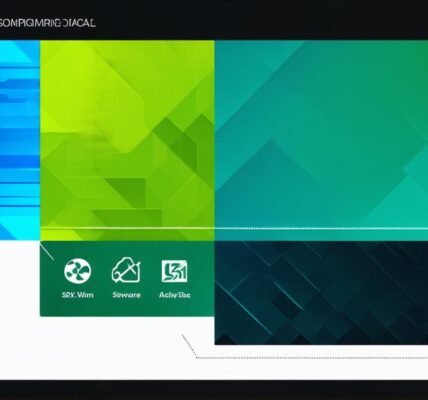The world of video game development is constantly evolving, with new technologies and software solutions emerging to help creators bring their visions to life. In this article, we will explore the different types of OS designed to manage video game consoles, their features, and how they can benefit game developers.
Firmware Operating Systems: What are They?
Before we dive into the world of firmware operating systems, it is essential to understand what they are and why they are critical in managing video game consoles. Firmware OS is a type of software that controls the hardware of a device.
In the case of a video game console, the firmware OS manages the system’s hardware components such as CPU, RAM, GPU, and storage drives. Firmware OS also provides an interface between the game software and the hardware, ensuring smooth and efficient communication between the two. This makes it easier for game developers to create games that are optimized for a specific console’s hardware capabilities, leading to better performance and a more enjoyable gaming experience.
Types of Firmware Operating Systems for Video Game Consoles
There are several types of firmware operating systems designed specifically for video game consoles. Some of the most popular ones include:
- Proprietary OS
- Open-source OS
- Hybrid OS
- Specialized OS

Proprietary OS
A proprietary OS is a type of firmware operating system that is developed and owned by the console manufacturer, such as Sony or Microsoft. This means that the source code for the OS is kept secret and cannot be modified or distributed by anyone else. Proprietary OS is typically used to manage the hardware components of a video game console, ensuring compatibility with games developed specifically for that console.
One example of a proprietary OS is the PlayStation OS used in Sony’s PlayStation consoles. The PlayStation OS provides a user-friendly interface for players and game developers alike, with features such as the ability to install and manage games, as well as access to online services like the PlayStation Network.
Open-Source OS
An open-source OS is a type of firmware operating system that has its source code available for anyone to view, modify, and distribute. This means that developers can use an open-source OS to create games that are compatible with multiple consoles, making it easier to reach a wider audience.
One example of an open-source OS is the Linux operating system, which is used in several video game consoles such as the PlayStation 3 and Wii U. Linux provides developers with a powerful and flexible platform for creating games, with support for multiple programming languages and tools.
Hybrid OS
A hybrid OS is a type of firmware operating system that combines elements of both proprietary and open-source OS. This means that game developers can use the hybrid OS to create games that are optimized for a specific console’s hardware while also benefiting from the flexibility and customization options provided by an open-source OS.
One example of a hybrid OS is the Nintendo 3DS OS, which combines the proprietary firmware of the 3DS console with the open-source Linux operating system. This allows developers to create games that take advantage of the 3DS’s hardware capabilities while also benefiting from the flexibility and customization options provided by Linux.
Specialized OS
A specialized OS is a type of firmware operating system that is designed for a specific purpose or use case, such as education or healthcare. While not as common as proprietary, open-source, and hybrid OS, specialized OS can still be beneficial for video game developers who need to create games with unique features or requirements.
One example of a specialized OS is the Kodi media center software, which is used to stream video and music content on a wide range of devices, including video game consoles like the Xbox One and PlayStation 4.
Benefits of Using Firmware Operating Systems for Video Game Consoles
Using firmware operating systems for managing video game consoles has several benefits, including:
- Enhanced performance
- Improved security
- Greater customization options
- Compatibility with games developed specifically for the console
- Better integration with hardware components
Enhanced Performance
Firmware operating systems are designed to optimize the hardware of a video game console, ensuring that it runs smoothly and efficiently. This means that games will run faster and smoother on a console with a firmware OS compared to one without.
Improved Security
Firmware operating systems also provide better security features than open-source or hybrid OS, as the source code for the OS is kept secret and cannot be modified by unauthorized parties. This reduces the risk of malware or other security threats compromising the console’s performance or data.
Greater Customization Options
Firmware operating systems provide developers with greater customization options than open-source or hybrid OS, as they have direct access to the console’s hardware components. This allows developers to optimize their games for a specific console’s hardware capabilities, leading to better performance and a more enjoyable gaming experience.
Compatibility with Games Developed Specifically for the Console
Firmware operating systems are designed to work specifically with games developed for that console, ensuring compatibility between the game software and the hardware. This means that developers can create games that take full advantage of the console’s hardware capabilities without worrying about compatibility issues.
Better Integration with Hardware Components
Firmware operating systems provide a direct interface between the game software and the hardware components of the console, ensuring smooth and efficient communication between the two. This means that developers can create games that are optimized for a specific console’s hardware capabilities, leading to better performance and a more enjoyable gaming experience.
Case Study: Nintendo Wii OS
The Nintendo Wii OS is an excellent example of how firmware operating systems can benefit video game developers. The Nintendo Wii OS was designed specifically for the Wii console, ensuring compatibility with games developed for that console. This meant that developers could create games that took full advantage of the Wii’s hardware capabilities, leading to better performance and a more enjoyable gaming experience.
The Wii OS also provided greater customization options than open-source or hybrid OS, as developers had direct access to the console’s hardware components. This allowed developers to optimize their games for the Wii’s unique hardware capabilities, such as its motion control sensors and Wii Remote controllers.
Moreover, the Wii OS provided an excellent security feature by ensuring that only authorized software could be loaded onto the console. This prevented malware or other security threats from compromising the console’s performance or data.
Conclusion
In conclusion, selecting the right firmware operating system for managing your video game console is critical to ensure optimal performance and a more enjoyable gaming experience. Proprietary OS, open-source OS, hybrid OS, and specialized OS are all types of firmware operating systems designed specifically for video game consoles, each with its benefits and drawbacks.
It is essential to carefully consider the requirements of your game and the capabilities of the console before selecting a firmware operating system. By doing so, you can create games that take full advantage of the console’s hardware capabilities while also ensuring compatibility with games developed specifically for that console.




